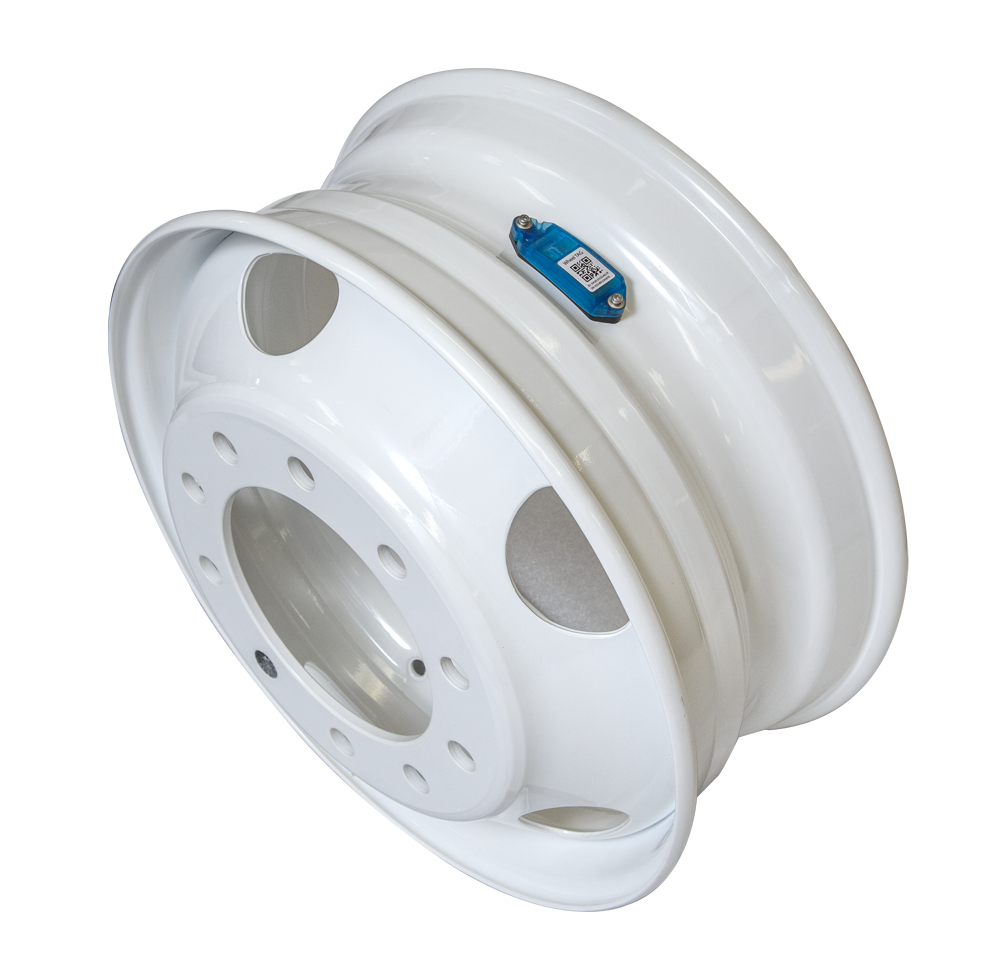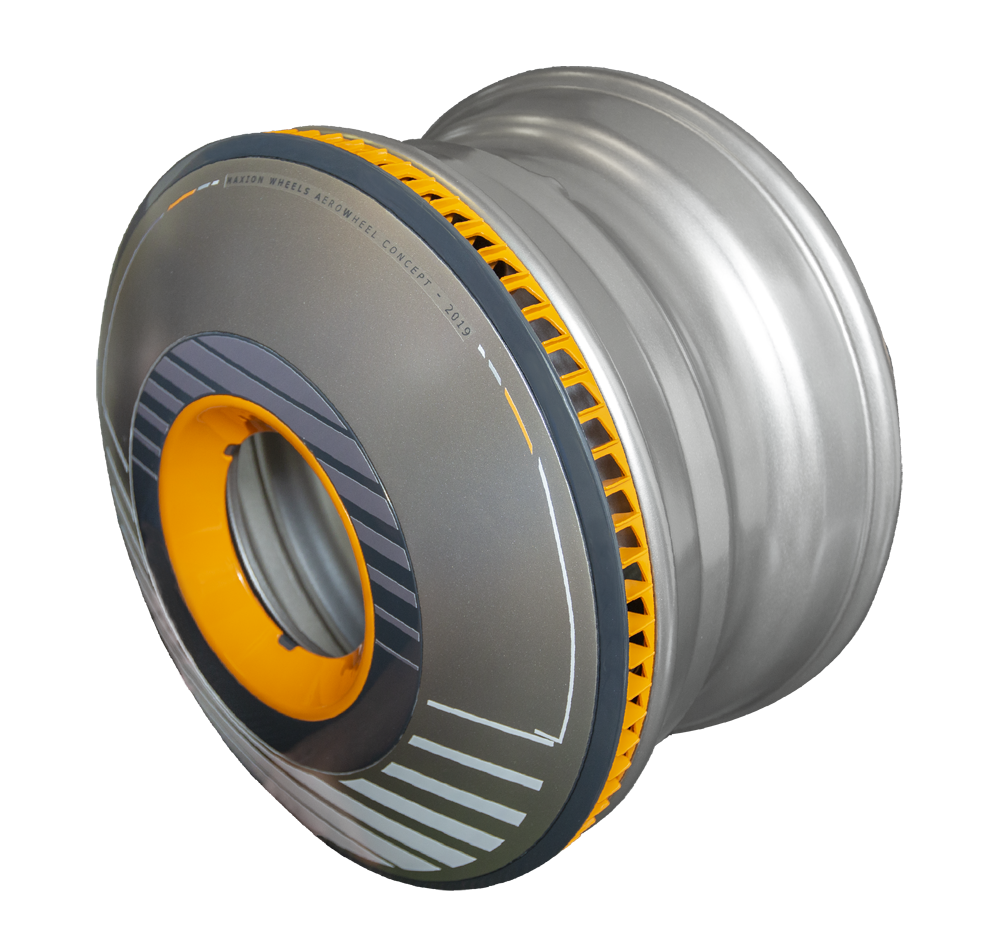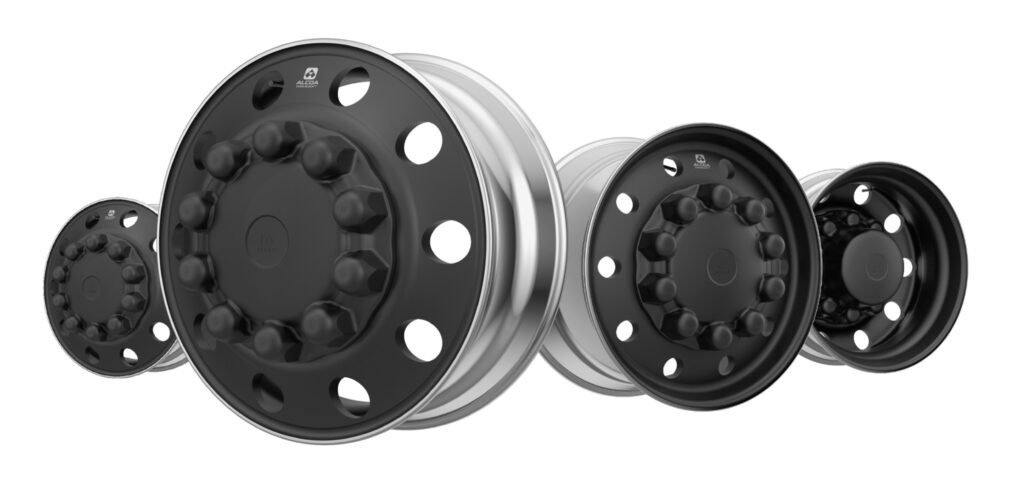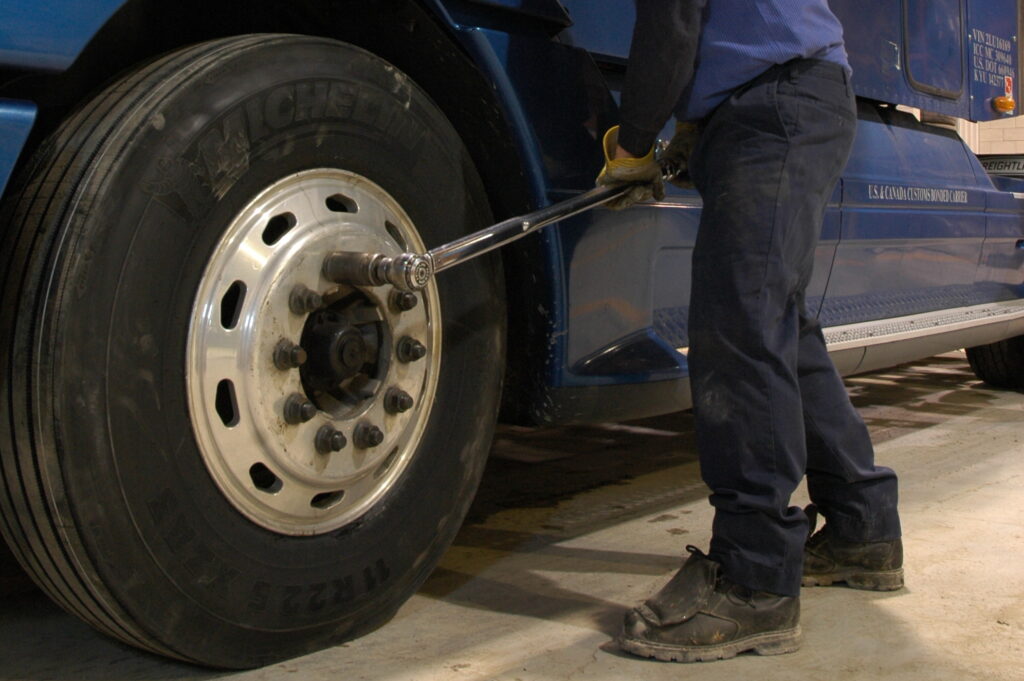Truck wheel decisions go beyond steel vs. aluminum
A quick glance at a truck or trailer wheel doesn’t exactly trigger thoughts of high technology. With the exception of different surface treatments, they look much like their counterparts that have been (ahem) around for decades.
They deserve more credit than that.
Weights have dropped dramatically as engineers refine design elements while maintaining the all-important load ratings and durability. The appearance continues to be enhanced as well, whether through a powder-coated steel or an aluminum offering with a special surface treatment.

There are even plans to make truck wheels smarter, as companies look at the valuable data that could be gleaned from a wheel end. One project by Maxion, in a partnership with ZF Openmatics, is using sensors to measure vehicle load; tire pressure, temperature and humidity; speed and vibrations. With a wireless link, that’s all fed to the driver and cloud-based servers.
“How smart can a wheel be?” asks Alcoa global technical manager Douglas Mason, referring to his company’s research into the potential. “There are a lot of things going on in that area.”
Shedding wheel pounds
There are plenty of potential wheel benefits to consider in the purchasing process, but the draw of every option will vary depending on the application.
The advantages of lower weights are a given when it comes to bulk haulers, for example. “Every ounce can be turned into revenue,” says J. David Walters, Alcoa’s manager of warranty and field service. A wide-base aluminum wheel can strip 50 lb. off a wheel end when compared to dual steel wheels and doubled tires.
A 22.5 x 8.25 aluminum wheel can weigh below 40 lb., and the steel wheels are 20 to 30 lb. heavier than that, adds Mason. “Even in the duals you find a significant savings.”
Lighter weights contribute to better fuel economy, too.
But the steps to shed weight are not entirely the realm of aluminum wheels. Maxion’s 22.5 x 8.25 steel wheel, for example, weighs in at 64 lb. – about 4 lb. lighter than typical steel options. That lighter weight emerged in part by rethinking the shape of traditional hand holes, going with a circular opening rather than a D-shaped design.
“You’re continually refining that design and process to manufacture,” says Matt Brest, Maxion’s senior sales manager and application engineer for commercial vehicle and military wheels. “We’re always looking at what is the next-level material.”

Further refinements
The next generation of changes could see more refinements in the name of improved aerodynamics – something that Mason says will become particularly important as electric vehicles come to the market.
“What can we gain that will allow the mileage per charge to increase?”
During the most recent North American Commercial Vehicle Show, Maxion lifted the curtain on a concept for an “aerowheel” with a fastening system integrated in the wheel, and the results from a Computational Fluid Dynamics that suggested lower drag.
“Aero is part of the equation these days,” says Brest.
He isn’t talking only about the wheel designs themselves. Brest contends that increasingly popular aerodynamic wheel covers will lead more fleets to mount steel wheels.
“If you buy the expensive aluminum wheel and you put an aerodynamic cover over it, it will hide 90% of it,” he explains.
Walters counters that aluminum wheels offer many benefits other than the look or weight alone. They run truer than steel wheels, which can help to improve tire life, he says. (It explains why they can require more wheel weights to zero the tires.) They’re also better at dissipating heat.

Wheels that enhance curb appeal
For many operations, one of the key considerations is as fundamental as the curb appeal. Sharp-looking wheels lead to a sharper-looking truck. Look no further than the show-n-shine advocates who spend hours polishing every wheel end to a reflective gleam, or wipe every water droplet away from the finish of a custom color.
Steel wheels can be supplied directly from the factory with custom coatings that match a truck or fleet brand. Unlike the colorful layer from a can of spray paint, these coatings come in the exacting 3.5-mil thicknesses that won’t flake away or compress – both issues that can affect how well the wheel seats in place.
Aluminum wheels aren’t even limited to a mirror-like shine, Mason says, referring to Alcoa’s Dura-Black wheels as an example.
“You’re so used to an aluminum wheel being polished or bright, it was a real change in mentality,” he says. “There’s a whole segment out there that is very interested in the black-out look.”

Keep your wheels on
No matter what wheels are purchased, one of the biggest considerations for maintenance teams will involve the installation procedures that hold everything in place. This demands close attention to recommended mounting procedures which range from the cleaning of mounting surfaces to applying the appropriate amount of torque to fasteners.
Think of the stud like a spring. When you apply 450-500 lb-ft of torque to the nuts, the clamping force is created by the tension between compressed and stretched components.
“It’s not the torque. It’s the clamp load that’s really holding it in place. It’s the tension in that stud,” Mason explains.
But that torque is still a critical measure, and it needs to be confirmed.
When recommended practices were developed in the 1990s, they originally recommended torque checks after 50 to 100 miles of service. Not surprisingly, fleets struggled to bring the equipment back once it was that far down the road.
“We kind of knew people weren’t doing that,” Walters says.
After a variety of tests were conducted, the lower end of that range was set at five to 10 miles, requiring little more than a quick trip and some sharp turns by a mechanic to ensure everything is properly seating in place.
“These steps are critical. Every one of them. And if you miss on one of those steps you can cause that problem,” he adds.
Signs of wheel trouble
Those problems can ultimately to dreaded wheel offs.
The signs of potential trouble are not limited to physical cracks between bolt holes, caused by improper torque, excessive loads, or insufficient mounting flange support by the hub or brake drum. Over-torqued fasteners can damage ball seats on stud pilot wheels and damage the disc surface on hub pilot wheels. The rust streaking out from the bolt holes can be a sign of loose wheel nuts.
Once equipment is on the road and returning for preventive maintenance inspections, Brest recommends keeping a close eye on the tire treads, too. Uneven wear across the face of the tire could be a sign that the wheel is beginning to shift, he says.
They’re seemingly small steps, but they make a difference.
“Fleets that are very safety conscious have real wheel diligence,” Brest says. “They never have a wheel off and they never have an issue.”
Maintaining the look
When appearance plays any part of the purchasing decision, it makes sense to take some extra steps to keep the wheels looking their best.
Typical cleaners at a truck wash should suffice, and a soft brush and mild soap can make a difference. “It’s more about the frequency than it is about the strength of the cleaner,” Brest says.
But physically wiping the surface of the wheel becomes particularly important in winter conditions, when highways are layered in de-icing compounds.
“Calcium chlorides, magnesium chlorides have a real affinity for sticking,” Brest says, referring to the material that inevitably triggers corrosion. “To remove that takes a bit of effort.”
Some cleaners can do more harm than good, though, and an acetone is a good example of that.
“You can dull the finish with an acid pretty quick,” Walters says.
“Every truck wash calls it something different, but you don’t want to acetone a highly polished wheel.”
While the wheels can be repolished back to a high shine, that will take work – and even this well-intentioned practice could lead to unwanted damage.
Overly aggressive buffing can cause a “washout” around the lugs, interfering with the all-important contact that needs to keep things held tight, Mason says.
Walters also refers to the care needed to ensure roll-stamped markings are not buffed right off the wheel, undoubtedly catching unwanted attention from a roadside inspector.
Specialized equipment and skilled operators will make a difference here. Walters refers to VIS-Polish machines as an example of tools that can bring wheels back to a like-new condition.
And in the case of a steel wheel, it’s best to keep the spray paint in the cabinet. If a layer of paint is too thick or uneven, it can flake away or compress. As it wears away, it will create the gaps that affect clamping forces.
“The paint is probably the biggest enemy of hub-pilot wheels,” Walters says.
Have your say
This is a moderated forum. Comments will no longer be published unless they are accompanied by a first and last name and a verifiable email address. (Today's Trucking will not publish or share the email address.) Profane language and content deemed to be libelous, racist, or threatening in nature will not be published under any circumstances.
Good job
When switching from steel wheels to aluminum will the studs work or are steel and aluminum the same thickness?
Mr. John Smith
Thank you for your well-written comments on Steel and Aluminum wheels.
Interesting point Truck Drivers and Companies have neglected the importance of the Retorque after app. 50 miles driven.
Thank you again
Dave Marynuik